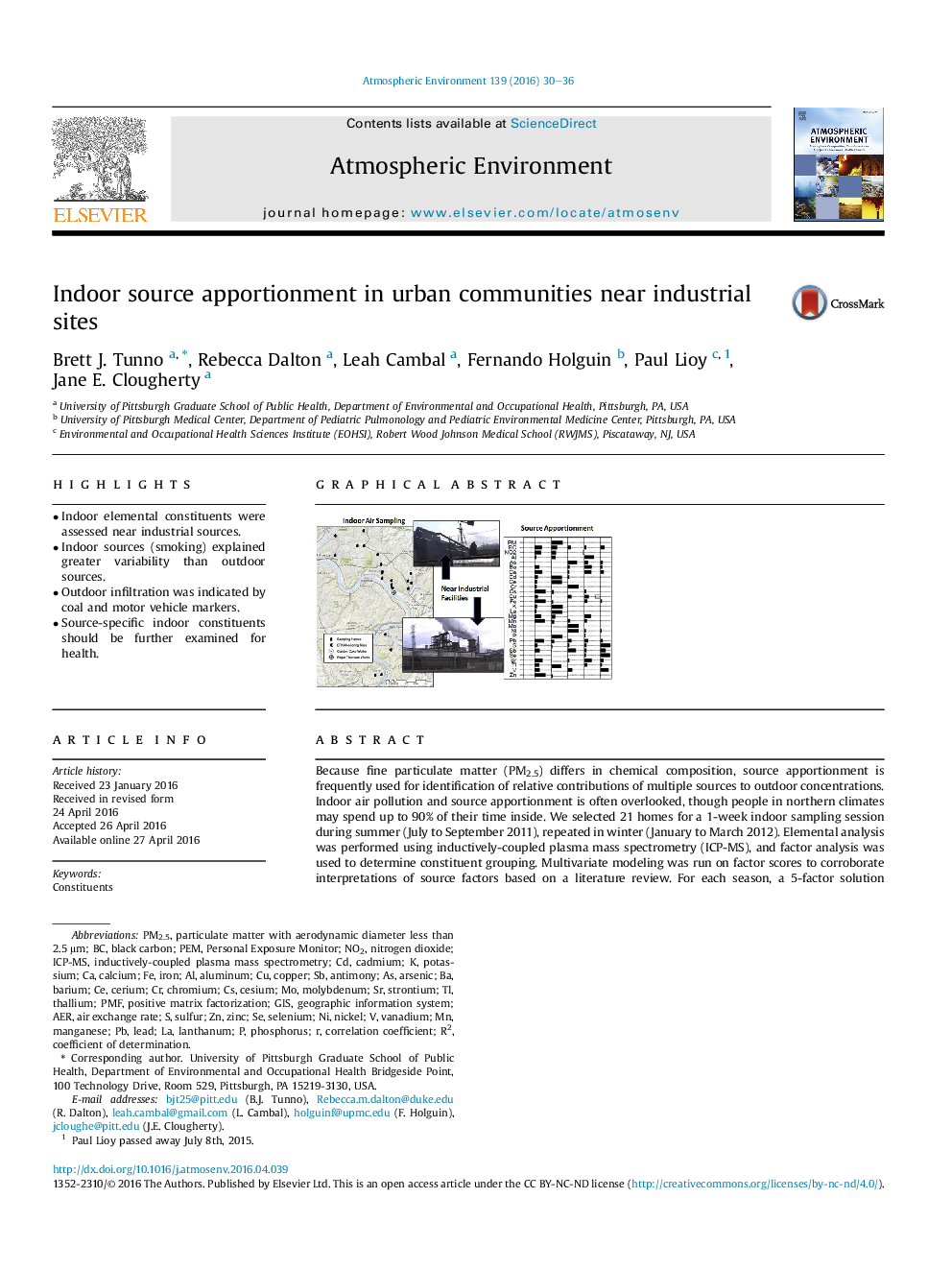| کد مقاله | کد نشریه | سال انتشار | مقاله انگلیسی | نسخه تمام متن |
|---|---|---|---|---|
| 6336294 | 1620335 | 2016 | 7 صفحه PDF | دانلود رایگان |
- Indoor elemental constituents were assessed near industrial sources.
- Indoor sources (smoking) explained greater variability than outdoor sources.
- Outdoor infiltration was indicated by coal and motor vehicle markers.
- Source-specific indoor constituents should be further examined for health.
Because fine particulate matter (PM2.5) differs in chemical composition, source apportionment is frequently used for identification of relative contributions of multiple sources to outdoor concentrations. Indoor air pollution and source apportionment is often overlooked, though people in northern climates may spend up to 90% of their time inside. We selected 21 homes for a 1-week indoor sampling session during summer (July to September 2011), repeated in winter (January to March 2012). Elemental analysis was performed using inductively-coupled plasma mass spectrometry (ICP-MS), and factor analysis was used to determine constituent grouping. Multivariate modeling was run on factor scores to corroborate interpretations of source factors based on a literature review. For each season, a 5-factor solution explained 86-88% of variability in constituent concentrations. Indoor sources (i.e. cooking, smoking) explained greater variability than did outdoor sources in these industrial communities. A smoking factor was identified in each season, predicted by number of cigarettes smoked. Cooking factors were also identified in each season, explained by frequency of stove cooking and stovetop frying. Significant contributions from outdoor sources including coal and motor vehicles were also identified. Higher coal and secondary-related elemental concentrations were detected during summer than winter. Our findings suggest that source contributions to indoor concentrations can be identified and should be examined in relation to health effects.
347
Journal: Atmospheric Environment - Volume 139, August 2016, Pages 30-36
